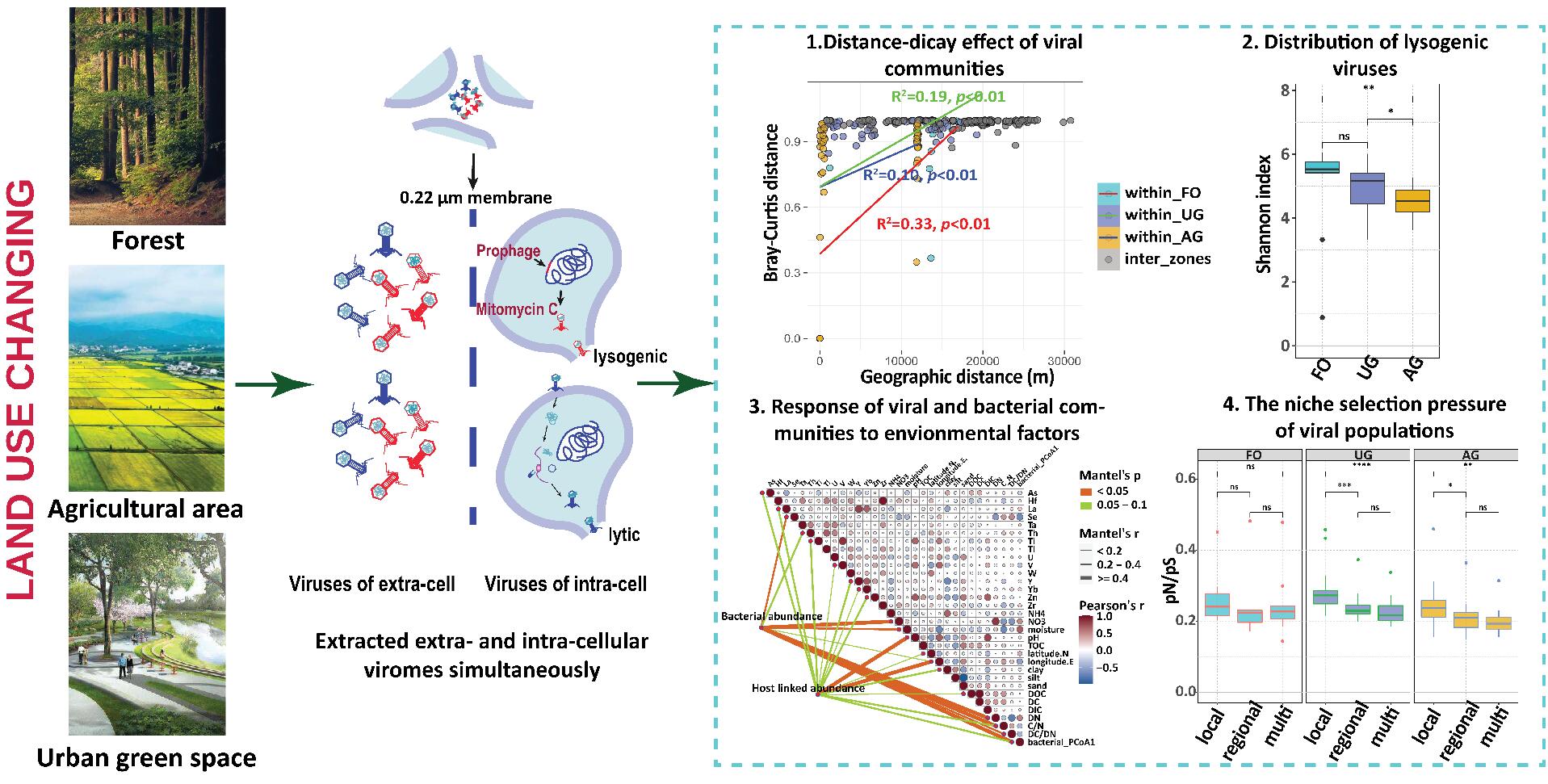Soils are intrinsically diverse partially due to their wide compositional spectrum and spatial heterogeneity in terms of physicochemical properties, supporting a high diversity of interacting microbes that are pivotal to ecosystem services including global C and N biogeochemical cycles. Viruses are extremely abundant and diverse biological entities on earth, playing vital roles in affecting soil microbiota and functions via regulating microbial community dynamics, reprogramming host metabolism during infection, and serving as vectors of horizontal gene transfer. Viral metagenomics has greatly expanded the viral ecology of aquatic ecosystems and mammalian guts, knowledge about soil viruses lags behind.
In a study published in Nature Communications, a research team led by Prof. ZHU Yongguan from the Institute of Urban Environment of the Chinese Academy of Sciences conducted an in-depth investigation of the ecological patterns of soil viral communities across the major land use types encompassing forest, agricultural, and urban soil.
They adopted viromic approach with additional mitomycin treatment, resulting in a by far the largest soil viral genomic catalog (LVD) consisting of 59,626 viral populations (VPs), in which 8,112 VPs was recovered with complete genome. They observed a stronger effect of land use types on the speciation of soil viral communities than spatial distance. Land use change associated factors, including pH, moisture, nutrient level, and habitat disturbance are the major determinants of viral community structures, and the host ranges and life strategies of soil VPs. Microdiversity analysis provided evolutional insights into the response of soil VPs to land use changes.
This work shed light on partial viral diversity hidden soil ecosystems and, provides mechanistic understandings of the ecology and evolution of soil viral communities in changing environments.

response of viral commnuities to land use change
Page:https://www.nature.com/articles/s41467-022-33771-2
Contact: SU Jianqiang
Institute of Urban Environment, Chinese Academy of Sciences
E-mail: jqsu@iue.ac.cn